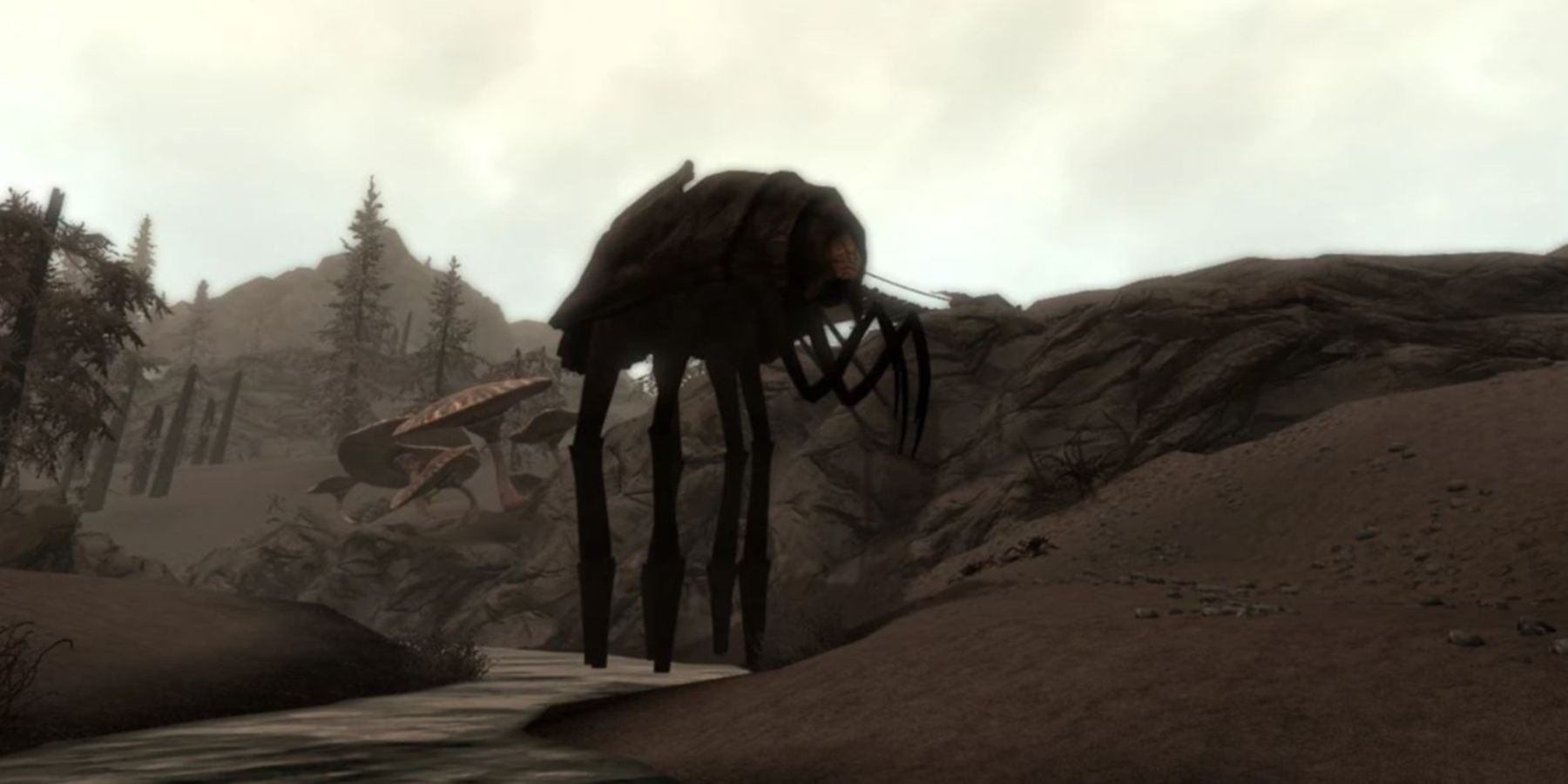Fast traveling in The Elder Scrolls 3: Morrowind offered somewhat of a unique experience. Players couldn't just click on a part of the map and travel there instantaneously, they had to seek out a method to do so. One of these methods was the silt strider, but unbeknownst to many players, this method of travel may have been the darkest to be featured in The Elder Scrolls.
Considering their powerful utility in the early game, players may have not questioned how exactly these creatures got them from point A to point B. But others who may have taken a closer look would have discovered a dark secret that is just as disturbing as it is nauseating. All of this lies in the secret of how The Elder Scrolls' silt striders were controlled.
The Dark Implications of Riding One of The Elder Scrolls' Silt Striders
Fast traveling in The Elder Scrolls is arguably the franchise's most powerful quality-of-life feature. It allows players to seamlessly travel between two locations without having to worry about waiting. In Morrowind, players could do this by paying a silt strider rider a small sum of gold to hitch a ride on one of these gigantic, tick-like creatures. These creatures are not found in the Ashlands of Vvardenfell, as they were said to have been domesticated long ago. However, the term "domesticated" may be a very generous one, considering how they were actually controlled.
Typically, the idea of riding a mount involves the use of things like reins in order to control the movement of a creature. However, there are seemingly no such reins on silt striders in Morrowind. If anything, players are more likely to notice the hollowed-out mid-section of the silt strider's body, where they can comfortably take a seat during their long rides. While this looks relatively painful for the creature, it doesn't seem to mind as the player can freely enter and exit it. But the front of the hollowed-out mid-section hides one of The Elder Scrolls' darkest secrets in plain view. Sitting at what could be considered the dashboard of this vehicle is a chilling sight: the exposed organs and tissues of the silt strider. At first glance, this gross illustration seemingly holds no meaning. But in reality, its exposed tissues and organs are at the crux of their domestication by the Dark Elves of Morrowind.
By poking and prodding at the tissues and organs of the silt strider, the rider is actually able to control its movements. This is how they are able to transport the player across the Ashlands of Vvardenfell without issues, and it also demonstrates one of the most iconic aspects of The Elder Scrolls' Dark Elf culture. The Dark Elves of Morrowind are not averse to the domination of those they see as lesser. For example, in Morrowind and The Elder Scrolls Online, they infamously employ the use of slavery to get much of their work done. This can be seen as a symptom of that, although there is much to suggest the relationship between rider and silt strider is much more amicable.
For example, players can find the last known silt strider named Dusty in The Elder Scrolls 5: Skyrim on Solstheim. Revus Sarvani, her owner, describes how he raised her from birth and also how she's nearing the end of her life. Rather than seeing her as just a mode of transportation, he treats her as an old friend as he plans on staying with her until her eventual death.
In terms of their domestication, this is arguably one of the darker secrets to be found in The Elder Scrolls. Despite that, it is nice to know that not all masters treated their silt striders badly. With any luck, we could see more of them in future The Elder Scrolls installments.




